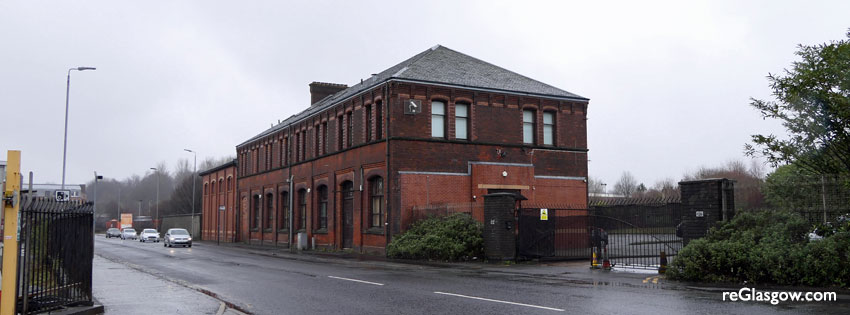
GLASGOW City Council have ‘declined to determine’ a planning application proposing demolition of a Victorian industrial building and construction of flats.
Weiss Development Co. Ltd want to knock down the old sawmill premises at 124 Craighall Road, near Speirs Wharf, just north of Glasgow city centre, and build 60 rental apartments in a five/six storey block.
A planning application was validated by the council in May 2022 but head of planning Sarah Shaw has now issued a document advising that a decision will not be taken because the applicant has not provided a pre-application consultation report.
The letter states: “This is an application to which the pre-application consultation (PAC) requirements apply… A planning authority must decline to determine an application for planning permission where there has not been compliance with those requirements.
“In my opinion, you have not complied with the PAC requirements. Therefore, I am declining to determine your application.”
The pre-application rules apply to major developments, which, in the case of residential proposals, means those of 50 or more units. The procedure involves a consultation process which includes posting a public notice in a newspaper, and holding public events

The proposal had attracted opposition and led to a successful campaign by Glasgow MSP Paul Sweeney MSP to have the building listed. After assessment, Historic Environment Scotland gave it a C-listing in October this year.
Jonathan Weiss applied for that decision to be overturned, arguing that “there is no historic, design or age significance to be found in 124 Craighall Road to warrant the building to have listing status”.
But Government appeals reporter Lorna McCallum said in her report: “I find that the exterior of the building retains much of its original design and character. While the interior has been altered, overall, it retains features of architectural and historic interest.
“The building contributes to the understanding of the social, economic and cultural history of the nearby Forth and Clyde Canal and the surrounding area.
“I am satisfied that it meets one or more of the criteria of special architectural or historic interest. Consequently, I conclude that the listing should be maintained.”
Mr Sweeney previously stated: “The City Sawmills at Port Dundas are an outstanding example Glasgow’s industrial past, of which we should be incredibly proud. As a city and as a population, we should celebrate our history and our heritage, including our industrial past.
“There is absolutely no justification whatsoever for demolishing it.”
Category C buildings are of special architectural or historic interest which are representative examples of a period, style or type. Historic Environment Scotland had said the building met the criteria for various reasons:
• It is a good surviving example of a late 19th century industrial office building.
• There is special design interest in the use of industrial brick with a high degree of detailing. The interior retains quality decorative timber finishes to walls, floors and fireplaces.
• The exceptional quality of the timber finishes reflect the building’s association with the historic timber trade, one of the largest of its kind in the United Kingdom in the late 19th century.
• It is the only surviving building of a once vast timber yard in north Glasgow.
• It is an important reminder of the city’s industrial past and in particular its historic association with the timber trade in Glasgow.
C-listed status gives the building extra protection but does not rule out a decision in favour of demolition.
A design document included with Weiss Development Co’s proposal stated: “The site was previously under light industrial use and at present the site is occupied by a two‐storey brick building (circa 1896) and a more recent brick extension (circa 1991) along with garages and workshops.
“The original brick building is showing evidence of settlement where cracking and sagging is evident.”
It was not “feasible or practical” to keep the building because of the level of remedial works required, the document stated.
It continued: “Material choices have been predominantly informed by the listed buildings at Speirs Wharf through the use of brick, cladding to reflect the industrial and more recent business park while render is used to soften the and delineate the massing of the development.”


